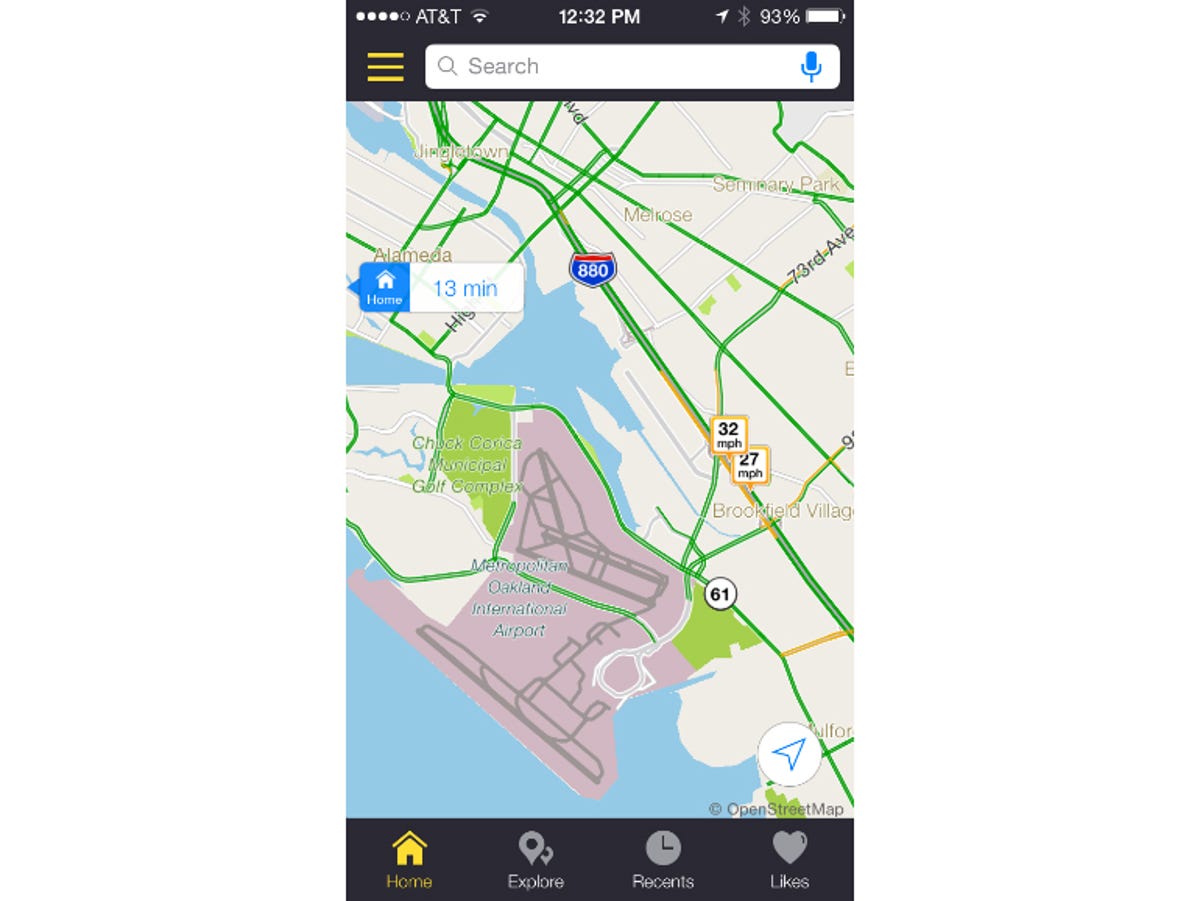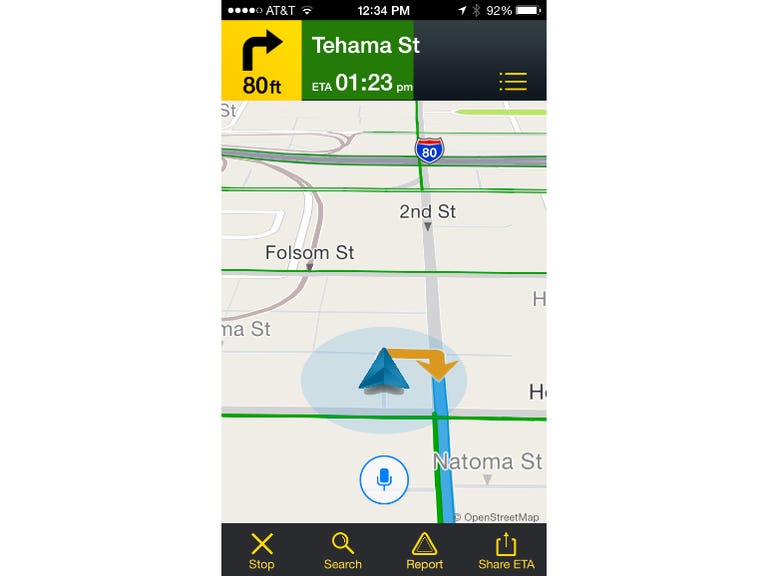 Why You Can Trust CNET
Why You Can Trust CNET Scout by Telenav review: Scout finds your traffic-free commute
Designed for car commuters, Scout shows you how long it will take to get to work or home, and sends alerts about bad traffic.
Between Google Maps on Android and Apple Maps on iPhone, Telenav's Scout navigation app needs more than one good argument to convince you to download it. The best points it makes in its favor include lists for events and points of interest by location, Web site syncing, and, most of all, excellent route calculation.
The Good
The Bad
The Bottom Line
The basic Scout app is free, but add a Scout Plus subscription for $4.99 per month or $24.99 per year, and you can download maps for offline navigation, extremely useful when traveling outside of data coverage areas.
Scout's home screen looks similar to that of Google Maps and Apple Maps, as it shows your present location on a map and includes an open search box at the top. However, the bottom of the screen adds a row of icons labeled Home, Explore, Recents, and Likes. These icons offer quick access to destination lists.
Looking at the map on the home screen, I was impressed with the traffic coverage, showing incidents and traffic flow information for not only freeways, but also many surface streets. Other map apps give you similar coverage, but it's nice to see that Scout has kept up.
Although the map only appeared in a top-down view, Scout does a neat trick where it can be set to switch to a perspective view as soon as you begin route guidance. I like that feature, mostly because I prefer to browse the map for destinations in top-down view, and don't want to manually shift the view when I start on my trip.

Earlier this year, Scout switched from its previous digital map source to using OpenStreetMaps, an open source digital map with crowdsourced updates. Checking around the San Francisco Bay Area, I noticed that Scout correctly showed two recent, major road changes, the new Tom Lantos tunnel on the coast and the new eastern Bay Bridge span. I have yet to find a car with a factory-installed navigation system that includes these two changes, although other navigation apps show them.
With Scout Plus, you can download maps for the app in three chunks, Western US, Central US, and Eastern US. However, I wish Scout also offered maps for the rest of the world, or at least Europe and Canada. Google Maps also includes the ability to download maps, and does not restrict selections to the US.
Where Scout really shines is destination selection. I could set my home and work addresses, and the app kept those easily accessible on the home screen, complete with drive times based on current traffic. I could also set it to send me traffic alerts for my home and work commutes, warning me if it might be best to wait out a bad traffic situation or plan a different route. These commute features makes Scout useful on a daily basis, even when you know your usual route.
As for the icons along the bottom of the home screen, Recents showed me my destination history. Explore included not only local points of interest listed by category, but also events, such as theater, sports, and live music. Checking the San Francisco listings, I did not find the music events to be comprehensive, but Scout might lead you to something interesting while traveling. The points of interest seemed restricted to my current location, and didn't let me browse places in another city.
The Likes list showed me places I had saved, and here it gets interesting. The app syncs with the Scout.me Web site. Logged into both the Web site and the app, I could look up and save destinations at my PC, then go to the app and sync those saved destinations.
Once I had a destination in the app, Scout showed me multiple routes in a tabbed format, making it easy to preview each one quickly. That interface works much better than with Google Maps, which only previews one, and begins navigating with any alternatives you select.
Trying out a few test destinations, Scout supplied identical routes to Google Maps for longer runs where freeways were involved. However, for a starting point and destination within the urban chaos of San Francisco, the routes differed. Neither offered the route that I, as a local, would take, but all seemed feasible. I had previously used Scout to navigate around Los Angeles, and was particularly impressed how it avoided traffic-congested freeways.
I noticed that, even for identical routes, Scout showed a slightly later ETA then Google maps, as it seemed to take a more conservative approach about driving times.
For turn-by-turn directions, Scout is as good as any navigation app I have used. Limited to the relatively small screen of a phone, it showed the map with turn guidance in a graphic at the top. I could also tap a button to show the list of turns for the route. Of course, more useful when I was driving was voice guidance, which had a pleasant voice telling me where and when I needed to turn.
Scout is primarily a car-focused navigation app, although it can be set to show pedestrian navigation. Missing is public transit or bicycle navigation.
If you commute by car, I highly recommend giving Scout a try, especially as it's free. Just the fact that it can give you proactive warnings about traffic may make the difference between extra wasted time sitting in your car, driving at 5 mph or a less stressful easy run home.
Compared to Apple Maps or Google Maps, I like that Scout gives more help on finding destinations than just a freeform search box. The history list is very useful, as is the website syncing. In this regard, Scout is much more capable than the preinstalled competition.
Scout comes as a free download for iOS, Android, or Windows Phone.


